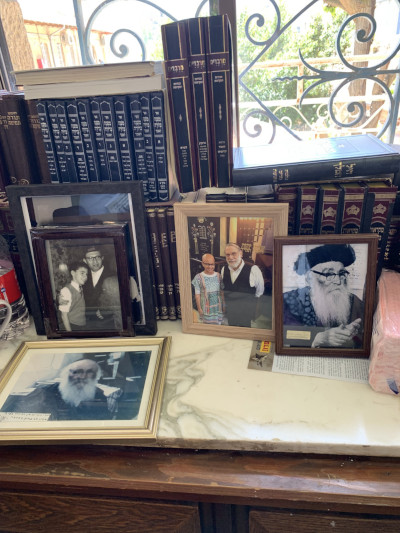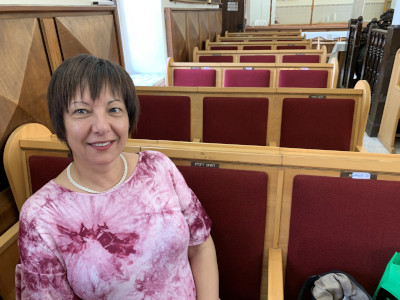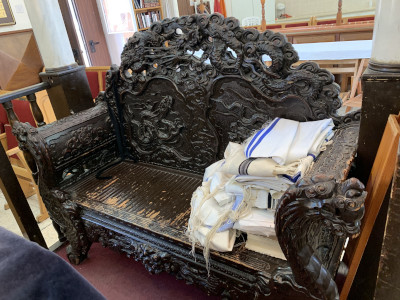Achdut Israel Synagogue in Jerusalem
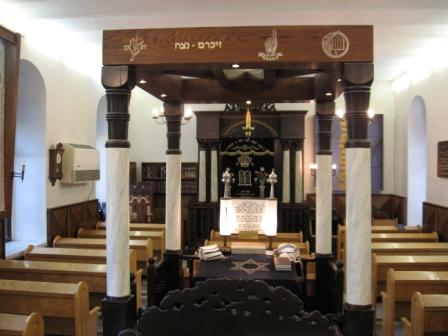 Achdut Israel Synagogue (בית כנסת אחדות ישראל) is a beautiful
synagogue, which is dedicated to the memory of
Olei Hagardom, the martyrs of the
Irgun and Lehi underground organizations, who expedited the removal of the British Mandate from Eretz Israel
with their ultimate sacrifice.
This unique place of worship is hidden on the second floor inside the old Spheradi Orphenage House of Jerusalem,
not far from the Machne Yehuda Market (the Shuk)
and the exotic Nachlaot neighborhood in central Jerusalem.
Achdut Israel Synagogue (בית כנסת אחדות ישראל) is a beautiful
synagogue, which is dedicated to the memory of
Olei Hagardom, the martyrs of the
Irgun and Lehi underground organizations, who expedited the removal of the British Mandate from Eretz Israel
with their ultimate sacrifice.
This unique place of worship is hidden on the second floor inside the old Spheradi Orphenage House of Jerusalem,
not far from the Machne Yehuda Market (the Shuk)
and the exotic Nachlaot neighborhood in central Jerusalem.
The name Achdut Israel is translated literally to "Unity of Israel," a name that amply describes the religious faction of the Revisionist Zionism movement. The "Achdut Israel" movement was active in Poland and Eretz Israel, and it established this synagogue in 1937 at the "Boys Elementary School" on Rabbi Cook Street. Later, the synagogue moved first to Doresh Zion Street, and finally to its current location – within the old Spheradi Orphenage House.
Rabbi Aryeh Levin, the "Father of the Prisoners" joined the synagogue around 1946, and to this day, his legendary personality has left a lasting impression on the synagogue. His picture is placed at the eastern side, and his name is inscribed on the chair. The Rabbi's grandson, Rabbi Benji Levin, is the current rabbi of the synagogue.
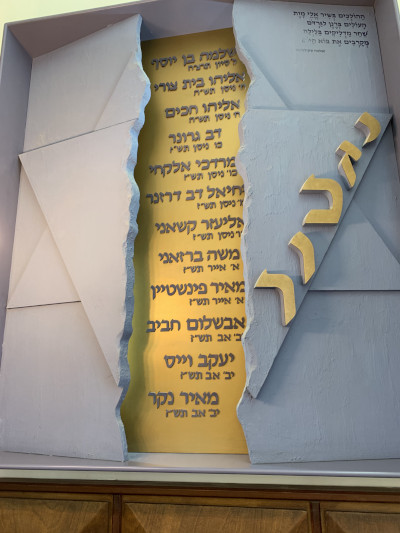
In 1955 the synagogue was officially dedicated to the memory of the twelve Olei Hagardom, and this beautiful commemorative plaque was erected on that occasion. Listed from top to bottom: Shlomo Ben-Yosef, Eliyahu Bet-Zuri, Eliyahu Hakim, Dov Gruner, Moredachai Alkahi, Yehiel Drezner, Eliezer Kashani, Moshe Barazani, Meir Feinstein, Avshalom Haviv, Yaakov Weiss, and Meir Nakar.
In May 2019, Avichai Avraham and my brother Eliezer took my wife, Orna, and me on a magnificent tour of this amazing synagogue.
Rabbi Aryeh Levin
After Rabbi Aryeh Levin, "the father of the prisoners," joined the synagogue, many underground members from the Irgun and Lehi followed suit. (The picture of this unique Rabbi is at the bottom left.)
Secret Weapon Storage ("Sleek")
Soon enough, the underground fighters created a secret weapons storage area just under the Torah Ark - "Aron Hakodesh." A storage place such as this was called "סְלִיק" (pronounced "sleek") in Hebrew, derived from the word "hide."
"Aron Hakodesh" and the Eastern Wall
A view towards the Aron Hakodesh and the eastern wall of the synagogue. Avichai, Eliezer and I are examining the picture of Rabbi Aryeh Levin. The Yizkor plaque for "Olei Hagardom" is placed to the right of the Aron Hakodesh.
The "Habima" and the Southern Wall
A view towards the "Habima" ("the stage" in Hebrew, where the Torah is read during the prayers), and the southern wall of the synagogue.
The Top of the "Habima"
A close up view of the top of the "Habima" showing the emblems of the Irgun and the Lehi. The "Habima" is placed at the center of the synagogue.
The Main Yizkor Board
The northern wall of the synagogue carries the main Yizkor (commemorative) Board that lists 498 fallen Irgun and Lehi soldiers. Amichai said that due to the fact the underground soldiers used code names, it was very hard to insure that all the fallen underground soldiers were properly listed.
Collecting the Yizkor Data
The synagogue committee worked very hard in the early 1950s to preserve the memory of all the underground fallen soldiers on the main Yizkor Board. Avichai showed us this picture of a letter sent in 1954 to the family of a fallen underground soldier, Gershon Manoach, asking for biographical details to be preserved on the Yizkor Board.
Prayer Benches along the Northern Side
My wife, Orna, sits on one of the prayer benches along the northern side of the synagogue. These benches are just under the main Yizkor Board.
